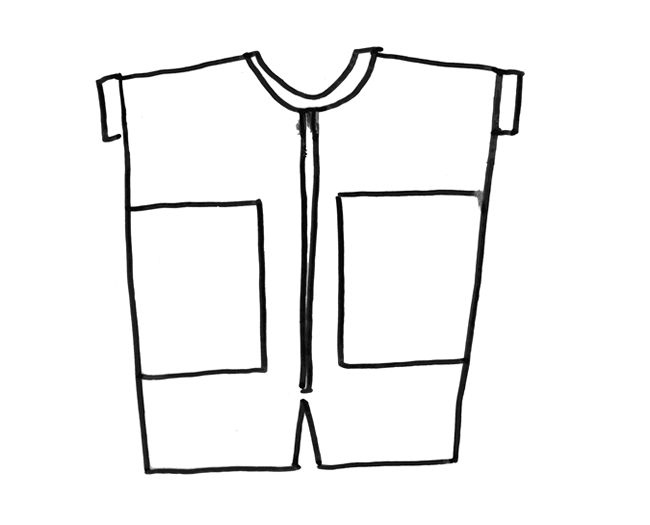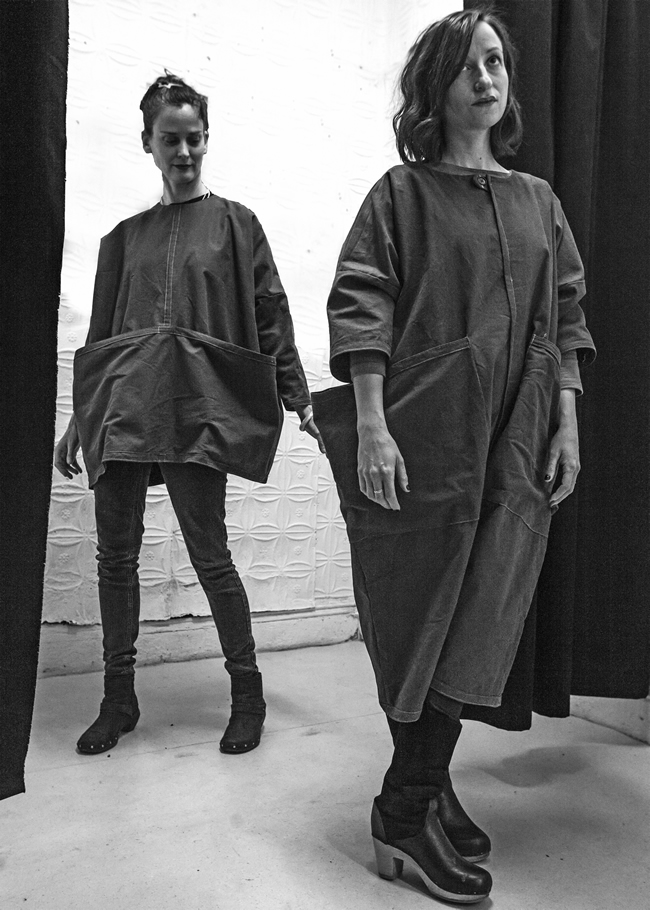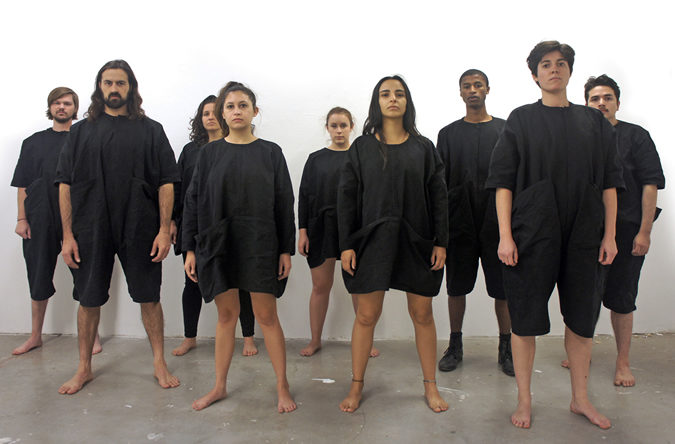Fawn Krieger

prototype templates for OUTFIT: romper & dress, 2016
Fawn Krieger is a NYC-based artist, whose multi-genre works examine themes of touch, ownership and exchange. She received her BFA from Parsons School of Design, and her MFA from Bard College’s Milton Avery Graduate School of the Arts. Her work has been exhibited at The Kitchen, Nice & Fit Gallery, The Moore Space, Von Lintel Gallery, the Rose Art Museum at Brandeis University, Portland Institute for Contemporary Art, Human Resources, Fleisher Ollman Gallery, Real Art Ways, Soloway Gallery, and Neon>fdv. Krieger is the recipient of numerous grants including those from Art Matters Foundation, Jerome Foundation, and the American Council on Germany. Her work has been featured in the New York Times, Artforum, Art in America, Sculpture Magazine, Modern Painters, NY Arts, Flash Art, and Texte zur Kunst. She serves as the Grants Officer at The Keith Haring Foundation and Consultant for Transart Institute.
Question:
Your recent sculptures – OUTFITS – make a connection between clothing design and historical moments of reinvention. Russian Constructivists like Vladmir Tatlin designed clothing, jumpsuits that embodied their maker’s political ideals. How do you think about the relationship between clothing design and notions of utopia? I wonder how, in 2016, apparel could be seen as capable of making space for utopian ideas and advancing a progressive political vision.
Answer:
We know that the preferred contours in the U.S. of women’s bodies fluctuate in accordance with the economy. When the market is flush, we see a media thinning of women’s bodies, like the flappers in the roaring twenties, and when times are lean due to inflation we see ideals with curves like in the 70s. Why are bodies so anchored to the cultivation and distribution of wealth? As an artist, as a woman, as an intellectual, as a citizen of Earth, how can I contribute to dismantling this paradigm, and what can I propose to replace it?

OUTFITS modeled by Bethany Fancher (L) and Emily Weiner (R) in Soloway gallery, 2016. Photo © Terttu Uibopuu
How can we imagine and build the world we want to live in when we are storing our bodies in containers built from inhumane labor conditions, inequitable business practices, and nationalistic interests? I am working from this foundational protest. And I began to unknot these questions for myself by thinking very literally: moving principals I believe in from below/inside of my skin’s surface to the outside, to the very first thing our bodies most often encounter with the world: clothing. And if these beliefs move from my within, to the material world, they start to become… they are a becoming. A static entity capable of movement.
Clothing is where our body ends and our environment begins. It outlines the exact point at which private and public collide. When garments are a choice, they can help humans define the contours of where and how our bodies meet the world. Their attributes assist in the construction of identity and an expanded awareness of self to whole. We perform in clothing, it changes us, who we think we are, and who we want to become.
As a sculptor I’m often thinking about the imprint energy has on matter, and by energy I am referring to its concrete form as labor, as well as its spiritual form as soul. Before I started making my OUTFITS, I had been wondering for a long while about the energy transmitted through things that hold our bodies — our clothing — and the enormous conflicts implicit in industrially fabricated apparel. I desired to try to make a line of apparel that I wanted touching my body: ethical, pro-labor, egalitarianist, anti-hierarchichal, post-gender, performative, nomadic. And I say “try” because its value as a question has meant infinitely more to me as hypothesis and experimentation than in the outcome– which is how I view utopia: utopia as a destination is frightening; utopia as question is inspirational.
A couple years before this project, I drove through southern Europe visiting neolithic cave art. With the limited words I have to describe it years later, the experience was simply profound and left me thinking about art more deeply as something primal, innate, and indisputably collective. And it also brought me to begin thinking about art as container for the body — the cave and its images as a kind of embrace or holding of our human forms.
My OUTFITS are as much related to architecture and theatre as they are fashion; they are a proposition for a new way of living in our bodies, within a world we choose and make together.

OUTFITS modeled by (L to R): Jake Reller, Eric Diehl, Beatrice Modisett, Devin Harclerode, Kristen Sanders, Carolina Aranibar-Fernandez, Wesley Chavis, Marîa Tinaut Rodriguez, & Ricardo Ruiz. Photo © Fawn





